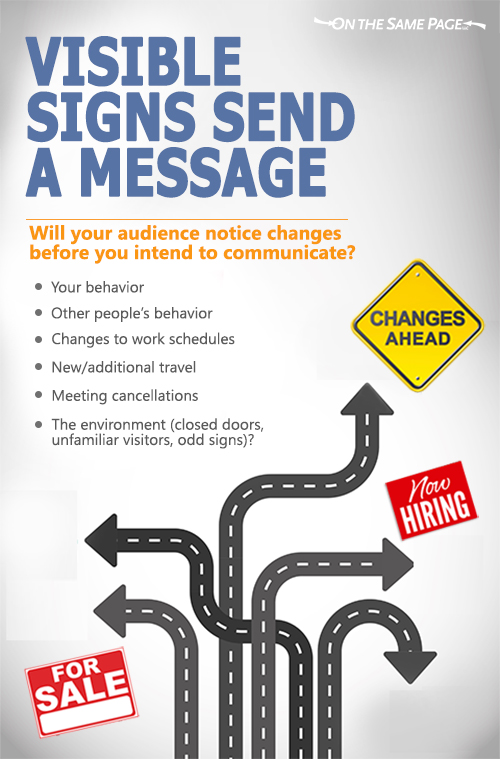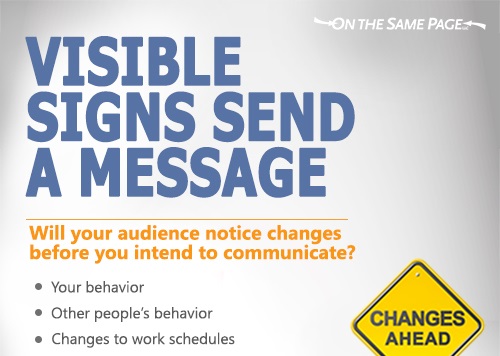People notice visible signs before you “officially” tell them anything. These signs constitute anything out of the ordinary, everyday experience, including:
- Frequent closed-door meetings in an environment where doors are almost always open
- Unannounced visits by executives who spend the day in meetings with onsite leaders
- Unannounced visits by guests who appear to be closely examining people, processes and activities
- Posters or advertisements for anything that hasn’t been announced to the workforce
- Changes to the perks — free breakfast or lunch that’s no longer free, or when the kitchen isn’t stocked for a while
- Questions that go unanswered or projects that are postponed without explanation
As humans, we naturally look for pattern changes. When something changes and we’re not sure why, we make up our own reason. Here’s an actual example:
 There was a For Sale sign on a fence facing the highway of near a manufacturing plant.
There was a For Sale sign on a fence facing the highway of near a manufacturing plant.
Employees driving to work passed the sign, then exited the highway, parked their cars and walked into the building entrance.
That’s when they saw the Now Hiring sign.
What do you suppose they were they thinking?
The reality was that the company had some land it wasn’t using adjacent to the manufacturing plant. So it decided to sell the land. At the same time, it happened to be hiring to expand its workforce.
Rather than communicate these two issues to the workforce so they could feel good about what was happening, they put up the signs and didn’t anticipate the resulting confusion.
What visible signs could your team be misinterpreting right now?
This is especially important when your team, function, business unit or organization is going through any kind of change. As you think through your change management plan, think about what visible signs your employees will see throughout the process. Are you timing your communication to align with visible signs? When leaders and managers tell employees what’s happening before they start to see the signs, they build trust, credibility and confidence.
For more information about employee engagement and change programs, or communication training, email me at kerrigan@on-the-same-page.com.





